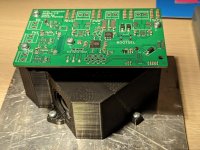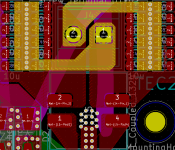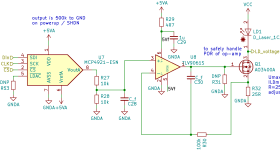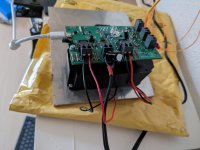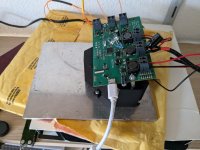The roundtrip time of this resonator is around 250 ps so 10+ GHz photodiode would useful for analyzing pulse forming in external cavity (but that's foreshadowing future events

). I have access to 28 Ghz 4 channel oscilloscope, so that's not an issue. The best I could find that don't cost an arm and a leg have bandwidth of 3 Ghz max, so I may have to extend cavity length. This would be unfortunate for pulsed experiments though (more foreshadowing).
I can't dig up papers right now, but basically modulating a laser diode with RF at close to cavity round trip time can create spectrum similar to mode locked lasers.





